Compare and contrast learning with two (or more) different tools. Include specific examples.
Virtual learning realities expand opportunities and generate curiosity and excitement for learners. Hsi (2008) discusses virtual and augmented reality integration into informal learning institutions (such as public libraries, museums, zoos, aquaria, community outreach centers, and after school programs), and describes engaging activities for both on-site and off-site learning experiences.
Virtual Field Trips
Off-site museum experiences include interacting with information via websites, in the form of tours, games, or videos. My local museum, Telus Spark Science Centre, hosts a YouTube playlist where you can watch staff conduct experiments and interact with their exhibits (https://www.youtube.com/@TELUSWorldofScience/playlists). When using virtual field trips in the classroom, the teacher serves to scaffold virtual field trips to facilitate a rich and engaging learning experience where students take active roles in the learning process.
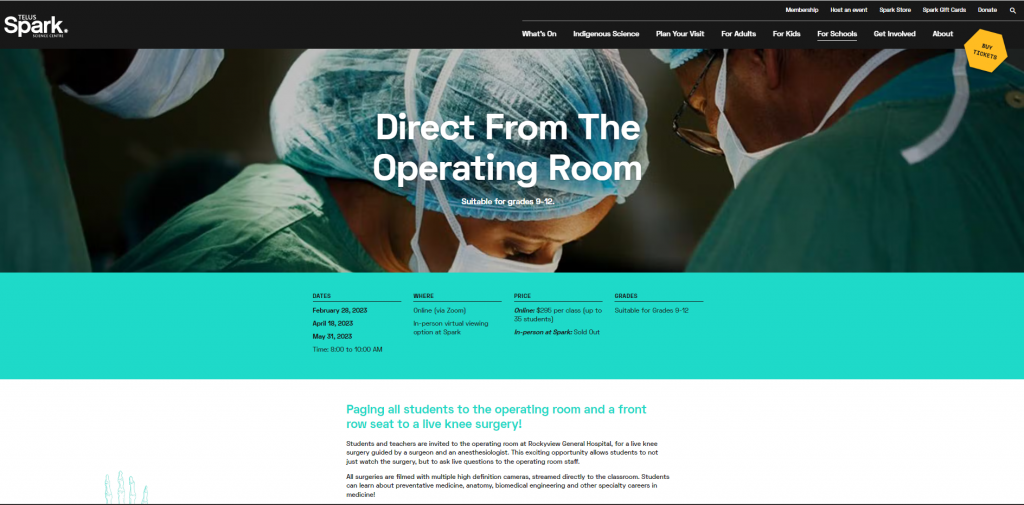
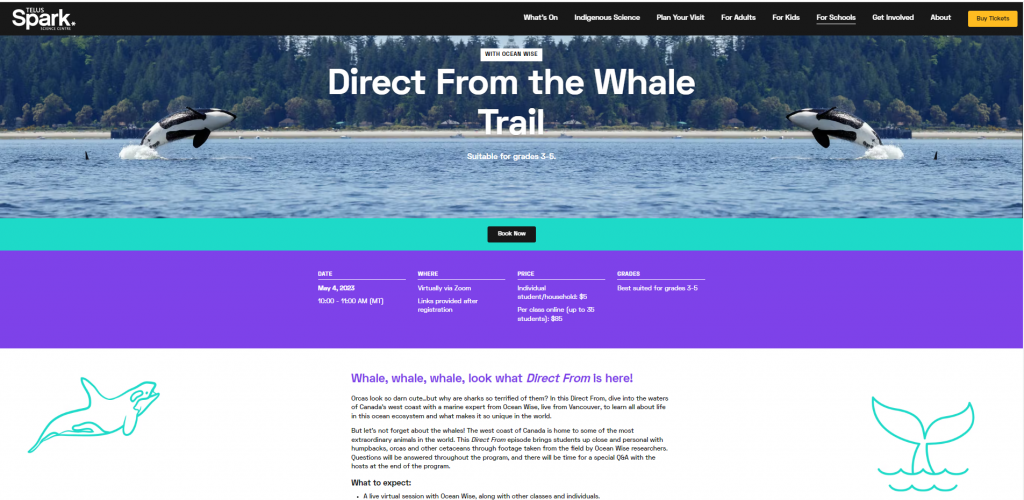
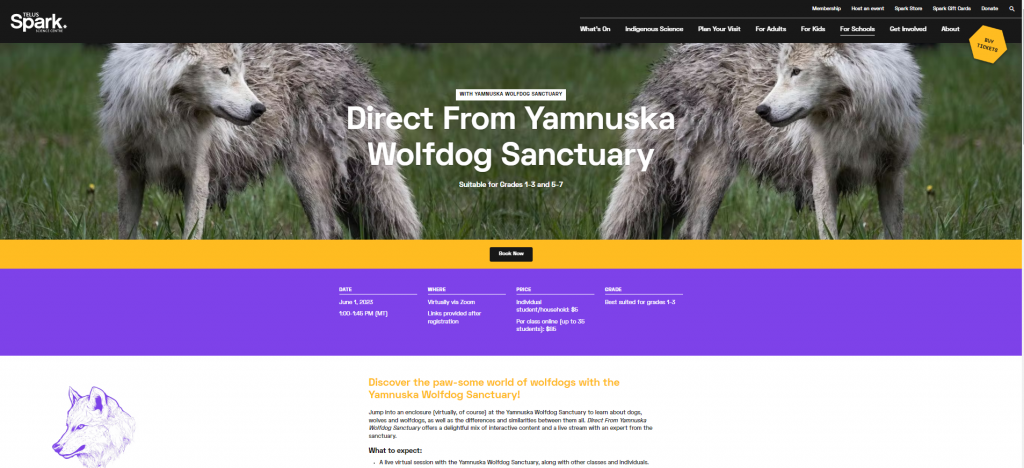
Augmented Reality
On-site museum experiences tend to be more physically interactive, allowing more sensory immersion through physical, visual, and auditory immersion, possibly even physical (haptic) feedback.
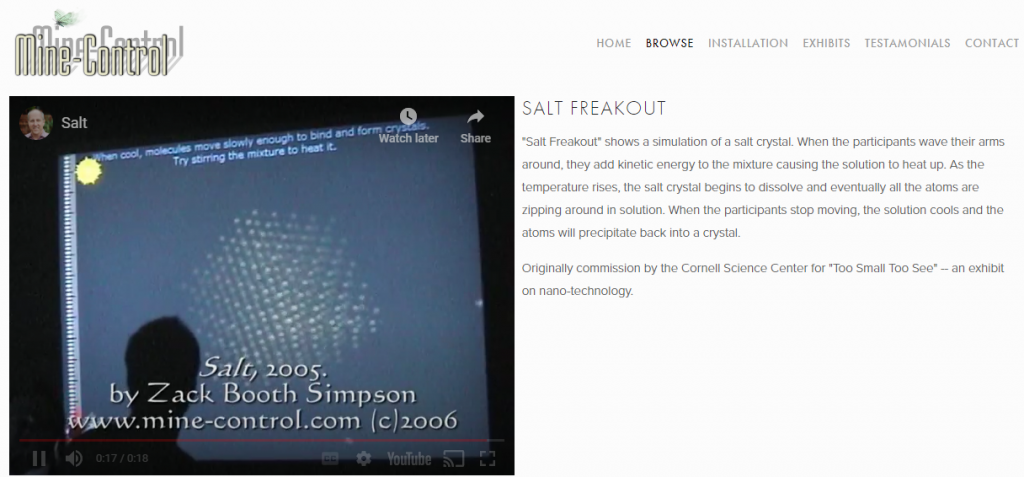
Mine-control, a company that specializes in creating interactive artwork for museums, demonstrates several exhibit examples online, allowing learners to observe how their interactive exhibits operate (https://www.mine-control.com/work#/moderation/).
AR in the mathematics classroom often consists of visualization tools, such as Desmos and GeoGebra, where tools can be manipulated and results examined visually to help learners identify and understand concepts.
Interactive Virtual Field Trips
Mead et al. (2018) examined science learning outcomes achieved through immersive virtual field trips (iVFTs). They discovered that iVFTs engaged students, increased student interest, and fostered learning by substituting virtual environments for environments that otherwise might be difficult or impossible to visit.


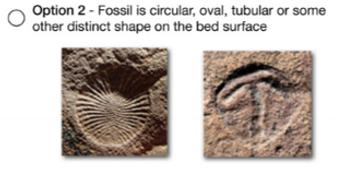
NetLogo! also offers multiple interactive experiences where learners can manipulate various aspects of an environment to see the effects, such as the Climate Change activity (https://www.netlogoweb.org/launch#http://www.netlogoweb.org/assets/modelslib/Sample%20Models/Earth%20Science/Climate%20Change.nlogo).

Virtual Reality
My institution uses VR skills training with the practical nursing program, and it has many benefits:
- students are exposed to diverse and ‘controlled’ training situations
- the tool’s evaluation capability that makes it far easier to provide objective feedback to students who miss a step or draw an inaccurate conclusion
- further support of anxious students given they are fully immersed in a new environment where it’s just them and their patient – much like in a healthcare environment.

An educational VR game that is currently being developed by a former colleague will immerse learners in an ocean eco-system where they take the perspective of an orca and learn first hand about the environment and how it is being threatened by pollution and other changes over time. Aside from content learning, the embodied experience fosters empathy and motivates the learner to better understand what is happening and take actions to address the harm that is occurring (Found in the Fjords, 2023).

The benefits of integrating immersive technology tools into educational settings are several and includes “higher academic outcomes when compared to traditional lecture-based instructional techniques… Among these outcomes are increases in academic performance, increases in motivation to learn, increases in content engagement, and increases in content retention” (Goff et al., 2018, p.435). However, immersive technology does not guarantee these outcomes. Immersive technology is a vehicle, not a result, and “no technology satisfies all the needs of its users. It requires smart use of it” (Wassie & Zergaw, 2019). Table 1 below provides a quick comparison of the various immersive technologies discussed and their features.
Table 1: Comparing Immersive Technology Tools
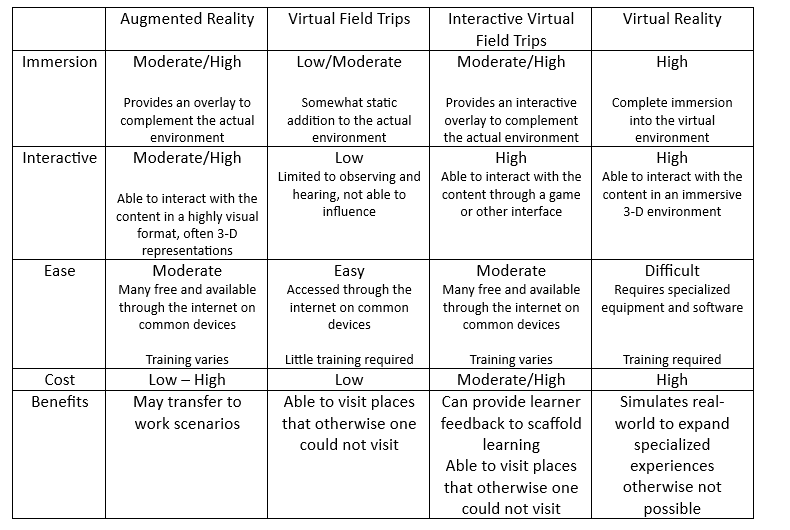
References
Bow Valley College. (2022). Can virtual reality help Calgary’s front-line fight COVID-19? Our Stories. Retrieved March 27, 2023 from https://bowvalleycollege.ca/our-stories/2020/fund-development-and-alumni/virtual-reality-in-times-of-covid-19
Found in the Fjords. (2023, March 28). Found in the Fjords: An arctic ocean VR experience [Video]. YouTube. https://www.youtube.com/watch?v=duvEwIKF-3g
Goff, E. E., Mulvey, K. L., Irvin, M. J., & Hartstone-Rose, A. (2018). Applications of augmented reality in informal science learning sites: a review. Journal of Science Education and Technology, 27(5), 433-447.
Hsi, S. (2008). Information technologies for informal learning in museums and out-of-school settings. International Handbook of Information Technology in Primary and Secondary Education, 20(9), 891-899.
Mead, C., Buxner, S., Bruce, G., Taylor, W., Semken, S., & Anbar, A. D. (2019). Immersive, interactive virtual field trips promote science learning. Journal of Geoscience Education, 67(2), 131-142.
Schlesinger, J. (2020, September 28). Practical nursing students at Bow Valley college use top new tech to prepare for the real world. Calgary Herald. https://calgaryherald.com/sponsored/news-sponsored/practical-nursing-students-at-bow-valley-college-use-top-new-tech-to-prepare-for-the-real-world-2
Wassie, Y. A., & Zergaw, G. A. (2019). Some of the potential affordances, challenges and limitations of using GeoGebra in mathematics education. Eurasia Journal of Mathematics, Science and Technology Education, 15(8), em1734. https://doi.org/10.29333/ejmste/108436
